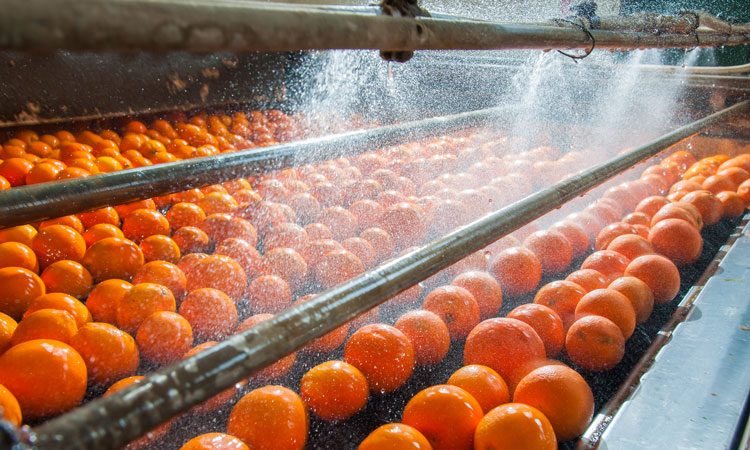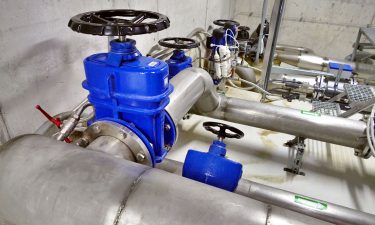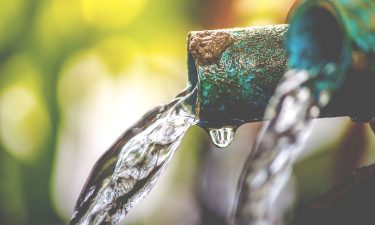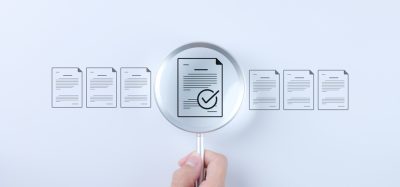How does water treatment in the food and beverage industry work?
- Like
- Digg
- Del
- Tumblr
- VKontakte
- Buffer
- Love This
- Odnoklassniki
- Meneame
- Blogger
- Amazon
- Yahoo Mail
- Gmail
- AOL
- Newsvine
- HackerNews
- Evernote
- MySpace
- Mail.ru
- Viadeo
- Line
- Comments
- Yummly
- SMS
- Viber
- Telegram
- Subscribe
- Skype
- Facebook Messenger
- Kakao
- LiveJournal
- Yammer
- Edgar
- Fintel
- Mix
- Instapaper
- Copy Link
Posted: 31 July 2019 | Kate Harveston | 3 comments
With the market for water treatment chemicals expected to grow more than 5 percent by 2024, how does water treatment actually work?


Water is a crucial component of the food and beverage industry. It’s used in many parts of day-to-day operations, from cleaning raw materials to the incorporation of recipes.
Many plants assume municipal water is clean and safe to use. However, recent headlines surrounding water quality, such as the Flint, Michigan crisis, have left processors asking questions. Today, it’s necessary to monitor water quality and determine impurity levels before use.
Water needs to be treated to ensure quality doesn’t affect the production process. Once used, all water leaving the plant must be treated to meet discharge limits set by state and federal regulations.
Water can be changed, altered and treated — both chemically and non-chemically — to meet quality standards. How does it work?
How does water treatment work?


Even though it recently came under criticism, chlorine disinfection for water treatment is widespread.
Treatment methods are based on chemical and non-chemical technologies. Chlorine disinfection is widespread, though it recently came under criticism due to toxicity concerns when pumped back into freshwater. However, the market for water treatment chemicals is expected to grow more than 5 percent by 2024. Experts believe this increase is due to the rise in groundwater pollution.
Non-chemical treatments are also a viable way to clean impurities from water.
Reverse osmosis
During the reverse osmosis purification process, a semi-permeable membrane is used to remove ions and unwanted particles. This process can remove both chemicals and bacteria, resulting in potable water safe for food and beverage production. The permeable membrane filters contaminants through a process called size exclusion, where particles of a specific size cannot pass through.
Ion exchange
When contaminants dissolve in water, they form ions. During ion exchange (IE) treatment, unwanted contaminants are removed from the water and replaced with a non-harmful substance. Ions can be either positive or negative, and the replacement substance must have the same type of electrical charge. Keep in mind that ion exchange is a broad treatment and can remove numerous contaminants — including beneficial ones.
Carbon filtration
Activated carbon filters can reduce organic compounds and chemicals found in drinking water. It can dissolve radon, minimise the quantity of lead and remove solvents, pesticides and industrial wastes. It’s crucial to note that activated carbon filtration does not remove metals, nitrate or microbial contaminants.
Deaeration
Water with dissolved oxygen, when left untreated, can cause severe corrosion to metal equipment. Deaeration is a method that removes this dissolved oxygen — and other gases — from the water. Steam is fed into the bottom of the deaerator where it connects with water. The water is then heated up until the gases dissolve and vent out.
Settling
A settling system uses a tank to remove suspended particles from water. These particles, which have a higher density than the water, fall to the bottom of the tank. Common contaminants removed through settling include fats and greases, hair, sand, grit, wood, bottles and sludge. The latter, which builds on the bottom of suspension tanks, must be discharged regularly.
UV disinfection
UV (ultraviolet) rays, though invisible to the naked eye, come from the sun and is an effective water treatment option because of its germicidal properties. It can disinfect water from bacteria, viruses and even protozoans. UV light has been used to purify drinking water in the US as well as commercially in the pharmaceutical, cosmetic, beverage and electronics industries.
The water treatment process, whether involving methods like reverse osmosis or UV disinfection, is essential to food and beverage processors. Not only does treatment protect equipment and maintain a high-quality product, but it also prevents chemicals from contaminating freshwater systems.
The future of fresh water
Though the Earth is covered in water, access to safe drinking water is harder to come by. In fact, around 844 million people around the globe don’t have access to safe water.


There is limited access to safe drinking water due to lack of surface and groundwater availability, as well as chemical run-off.
Lack of surface and groundwater availability due to drought has caused many shortage issues. Chemical run-off has also contaminated a number of clean water sources.
To improve sustainability, many industries are looking into water recycling and reuse strategies. While water scarcity is a major threat to businesses in the food and beverage sector, water conversation methods can limit their water footprint and help them operate more efficiently.
Food processors can reuse water for landscaping, equipment washing, cooling towers and more. Treated wastewater never comes into contact with food. Industries have also recycled water to use in boilers, evaporators, chillers, dust control and irrigation systems.
Currently, the Environmental Protection Agency outlines guidelines for municipal water reuse, but not commercial. The food manufacturing industry and certain water-quality stakeholders are establishing guidelines for water reuse in production. Through workshops, organised studies and sustainable practices, these organisations promote the benefit of water reuse and legislation.
Water is a necessary component of the food and beverage industry. With recent quality concerns, it’s more important than ever for manufacturers to treat water and ensure it is safe for consumption. Water treatment methods remove contaminants and particles to provide a high-quality end-product. Processors can also adopt water reuse and recycling techniques to reduce their water footprint and combat freshwater scarcity.










Please can I have the flow chart for this operations
Very great and Informative post.
All your actions and movements are directed along the path outlined by the Paris Agreements or the struggle to reduce carbon dioxide emissions.
Is there no room for discussion of options or hypotheses about other greenhouse gases?